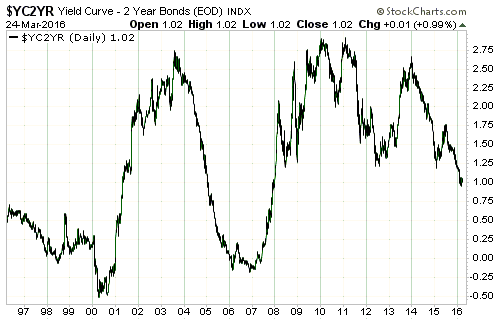At this time last year there was a lot of talk in the financial press about the huge US$ short position that was associated with the dollar-denominated debts racked up over many years in emerging-market countries. This debt-related short position supposedly guaranteed additional large gains for the Dollar Index over the ensuing 12 months. But now, with the Dollar Index having drifted sideways for 12 months and having had a downward bias for the past 5 months it is difficult to find any mention of the problematic US$ short position. Did the problem magically disappear? Did the problem never exist in the first place?
Fans of the US$ short position argument needn’t fret, because the argument will certainly make a comeback if the Dollar Index eventually breaks above the top of its drawn-out horizontal trading range. It will make a comeback regardless of whether or not it is valid, because it will have a ring of plausibility as long as the Dollar Index is rising.
I’m not saying that the argument for a stronger US$ driven by the foreign-debt-related US$ short position is invalid. I’m not saying it yet, anyway. The point I’m trying to make above is that if the argument was correct a year ago then it is just as correct today (since debt levels haven’t fallen) and should therefore be just as popular today. It is nowhere near as popular, though, because most fundamentals-based analysis is concocted to match the price action.
I actually view the “global US$ short position” as more of an effect than a cause of exchange-rate trends. Major currency-market trends are caused by differences in stock-market performance, real interest rates and monetary inflation rates. When these factors conspire to create a downward trend in the US dollar’s foreign exchange value it becomes increasingly attractive for people outside the US to borrow dollars. And when these factors subsequently conspire to create an upward trend in the US dollar’s foreign exchange value, debt repayment becomes more costly for anyone with US$-denominated debt outside the US.
So, if the Dollar Index resumes its upward trend later this year then anyone outside the US with hefty US$-denominated debt will have a problem, but the deteriorating collective financial position of these foreign US$ borrowers won’t be the cause of the dollar’s strength. It will just be a popular justification for the strength.
In general, fundamentals-based analysis will look correct and achieve popularity if it matches the price action, even if it is complete nonsense. A related point is that if fundamentals-based analysis is contrary to the recent price action then hardly anyone will believe it, irrespective of the supporting facts and logic.
 Print This Post
Print This Post

